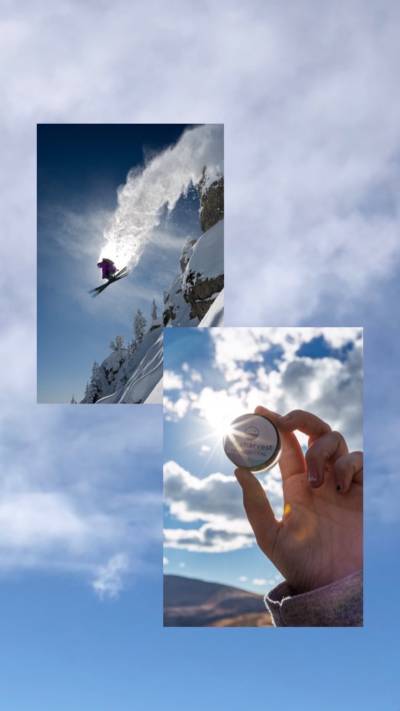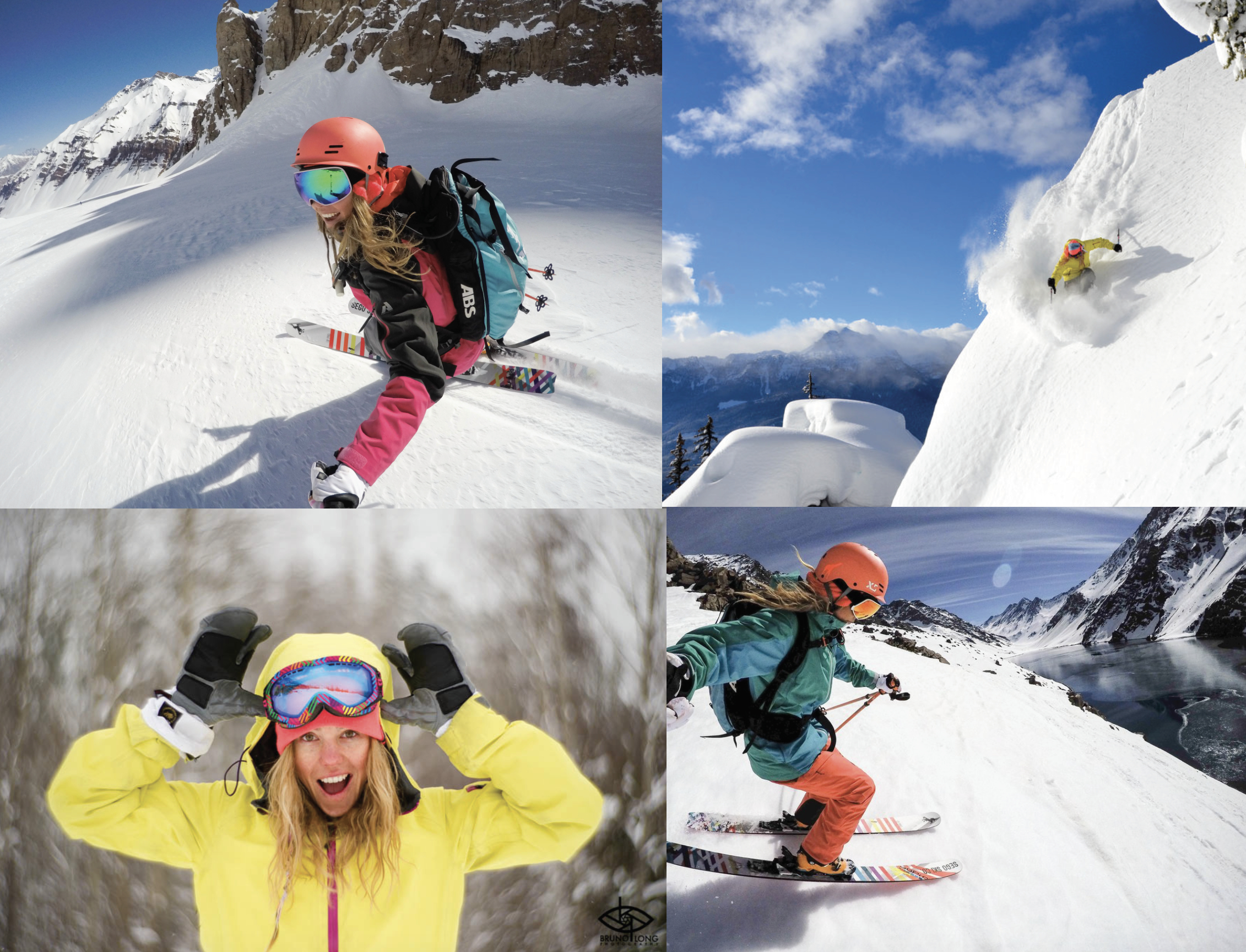By Haley Grant

Extreme sports and holistic living? Not really a combination of words that one typically expects to see in the same sentence. For many, when we hear “extreme sports,” also known as action sports, our minds go to thoughts of high-risk behavior, adrenaline junkies, and “I would never do that in a million years!”
And while high-risk behavior and that rush of adrenaline do hold some truth in the extreme sports arena, there is also a deeper psychology behind it that has led many extreme sports participants to opt for a more holistic, clean lifestyle.
It may come as a surprise that someone who jumps out of planes or backflips down a ski ramp can be an advocate for mindfulness and wellbeing. But it’s true, and the best part is that it’s something everyone can enjoy to lead a more active, healthy lifestyle – not just the daredevil, thrill-seekers among us.
But first, what exactly are extreme sports?
The actual term “extreme sports” dates back to the 1950s when novelist Ernest Hemingway used it to reference bullfighting, motor racing, and mountaineering. Over the decades, this term has evolved and expanded to encompass all sports that involve a high adrenaline rush.
In his book In Search of Ultimate Thrill, Joe Tomlison classifies extreme sports into three different categories: air sports, land sports, and water sports. The air sports include activities like base jumping, skydiving, and bungee jumping. Activities like skateboarding, mountain biking, and climbing fall under the land sports category, while water sports include surfing, scuba diving, and river kayaking, among others. [1]
How has the media fueled its popularity?
While Hemingway may have coined the actual term, extreme sports didn’t really soar to popularity until the 1990s, when the first X Games was broadcasted by ESPN in 1995. It was only after the X Games that activities like mountain biking and snowboarding were introduced in the Summer and Winter Olympics of 1996 and 1998. [2]
Hollywood soon picked up on the value of extreme sports, investing in the market with thrilling movies and documentaries that have helped viewers achieve a sense of thrill and danger that they may lack in their everyday life. Films like Vertical Limit, Free Solo, Blue Crush, Senna, and so many more have become all-time favorites.
By investing in extreme sports, the media played a role in both drawing attention to the movement and further elevating the athletes to celebrity status. Surfer Bethany Hamilton became a household name when her book Soul Surfer was published in 2004, later followed by the hit movie in 2011. Snowboarder and skateboarder Shaun White made his Hollywood film debut in Friends with Benefits, and skateboard legend Tony Hawk has made his fair share of appearances across the big screen.
In addition to the X Games and Hollywood, media platforms like YouTube also contributed to the popularity of extreme sports. Rather than relying on large corporations and production companies, the athletes used this platform to boost their individual brands, gaining further recognition and stardom.
Skateboarder, snowboarder, and motocross athlete Ken Block, for example, receives millions of views on his YouTube videos. And Ryan Doyle skyrocketed to fame after launching a series of YouTube videos of his parkour “ninja” skills.
Social media platforms like Instagram also fueled the profiles of these athletes. Hamilton currently has over 2 million followers on Instagram, while retired surfer Kelly Slater uses his platform of 5 million Instagram followers to share his clean and sustainable lifestyle. [3]
And speaking of clean, sustainable lifestyles…
What’s the connection between extreme sports and holistic living?
Extreme sports have taken on a culture of their very own, one that emphasizes uniqueness and individuality. This culture has also evolved to encompass holistic living, sustainability, and overall clean living. And that is because of the positive mental impact extreme sports has on its participants.
According to interviews conducted by researcher Eric Brymer, participants in extreme sports express feeling a sense of “peace and tranquility during the experience that reflects something similar to mindfulness.” These participants also express feeling “profoundly part of nature,” something Brymer attributes to why many extreme sports athletes work towards protecting the planet.
Researchers have also found that since many individuals partake in extreme sports for self-actualization and a desire to live in the moment, the activity promotes a “positive life change.” Not to mention, the adrenaline rush that a person gets from extreme sports activities releases endorphins, an automatic mood enhancer.

From athletes to environmental activists
It’s hardly a coincidence that extreme sports, which connect so many athletes and individuals to the outdoors, has given rise to a desire for more sustainable, holistic living. And there are many world-class athletes in this space who have used their platforms to promote this type of lifestyle.
Take professional skier Lynsey Dyer, who directed and produced the first and only all-female ski film Pretty Faces. In addition to being a world-class athlete, Dyer operates Unicorn Picnic, a group that offers apparel and gear, lighthearted content, and even a Unicorn School, which organizes trips to connect people to the outdoors.
Then there’s Jeremy Jones, the legendary snowboarder who’s often regarded as one of the most accomplished action sports athletes of all time. Jones is also an environmentalist and entrepreneur, having founded “Protect Our Winters” in 2007. This organization aims to unite the winter sports community in the fight against climate change. Former President Barack Obama even recognized Jones as a “Champion of Change” in 2013 for his work with this non-profit organization.
And let’s not forget Rob Machado, one of the world’s greatest surfers and a devout environmentalist. This free surfing icon founded the Rob Machado Foundation in 2004 with the mission to “educate and empower young people to make sustainable choices.”
There’s something for everyone – even “normal people!”
One of the great advantages of extreme sports is that, contrary to dated stereotypes, anyone can participate in them. In fact, many argue that extreme sports are even more accessible than traditional, competitive sports.
Unlike traditional sports, formal coaching and the need for a team is not always necessary to enjoy extreme sports. You can do these activities by yourself and some of them, depending on where you live, can even be done in your own backyard. From snowboarding to climbing, surfing to kayaking, there are so many ways you can dabble in extreme sports and indulge in a more active lifestyle.
